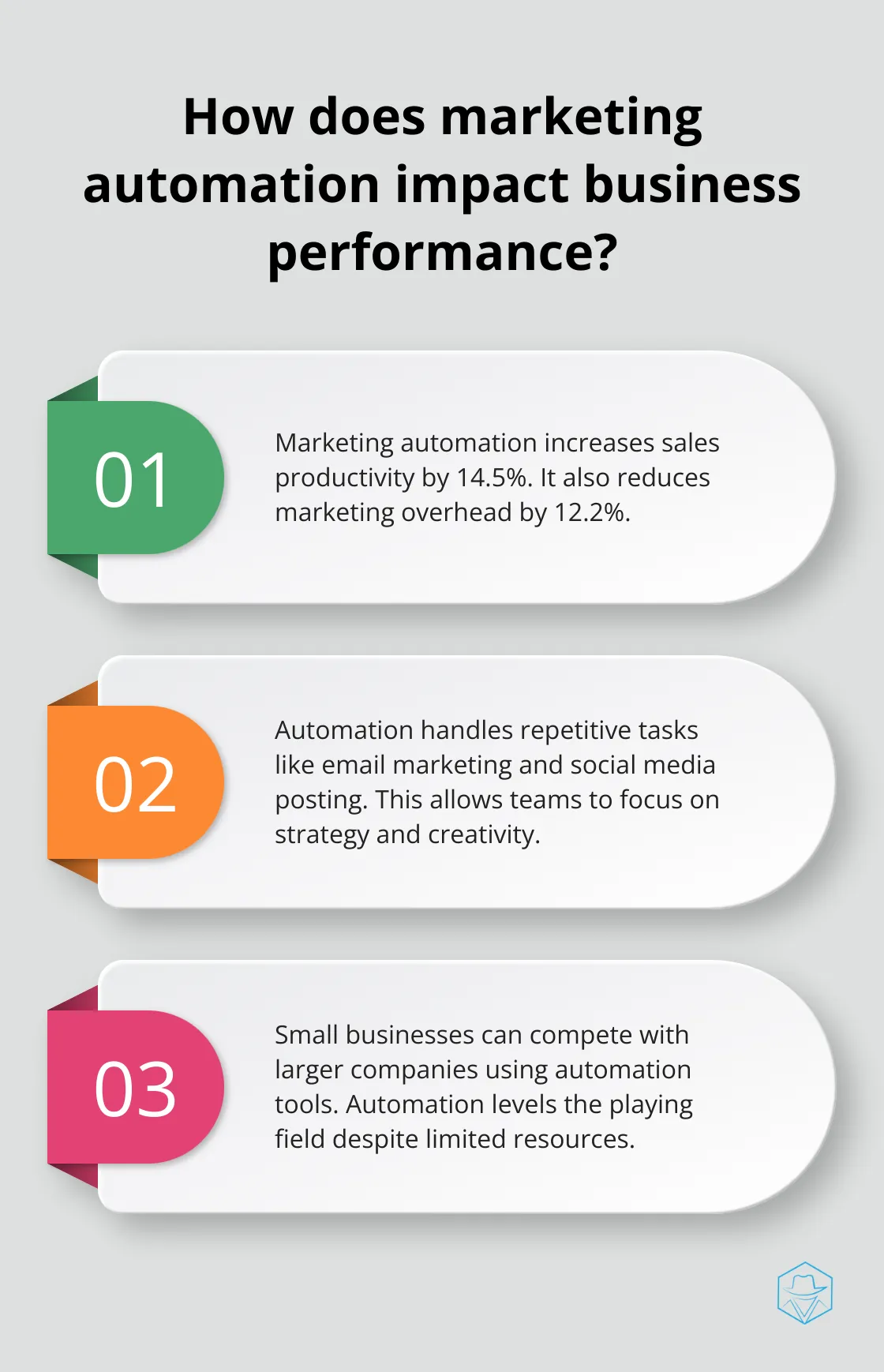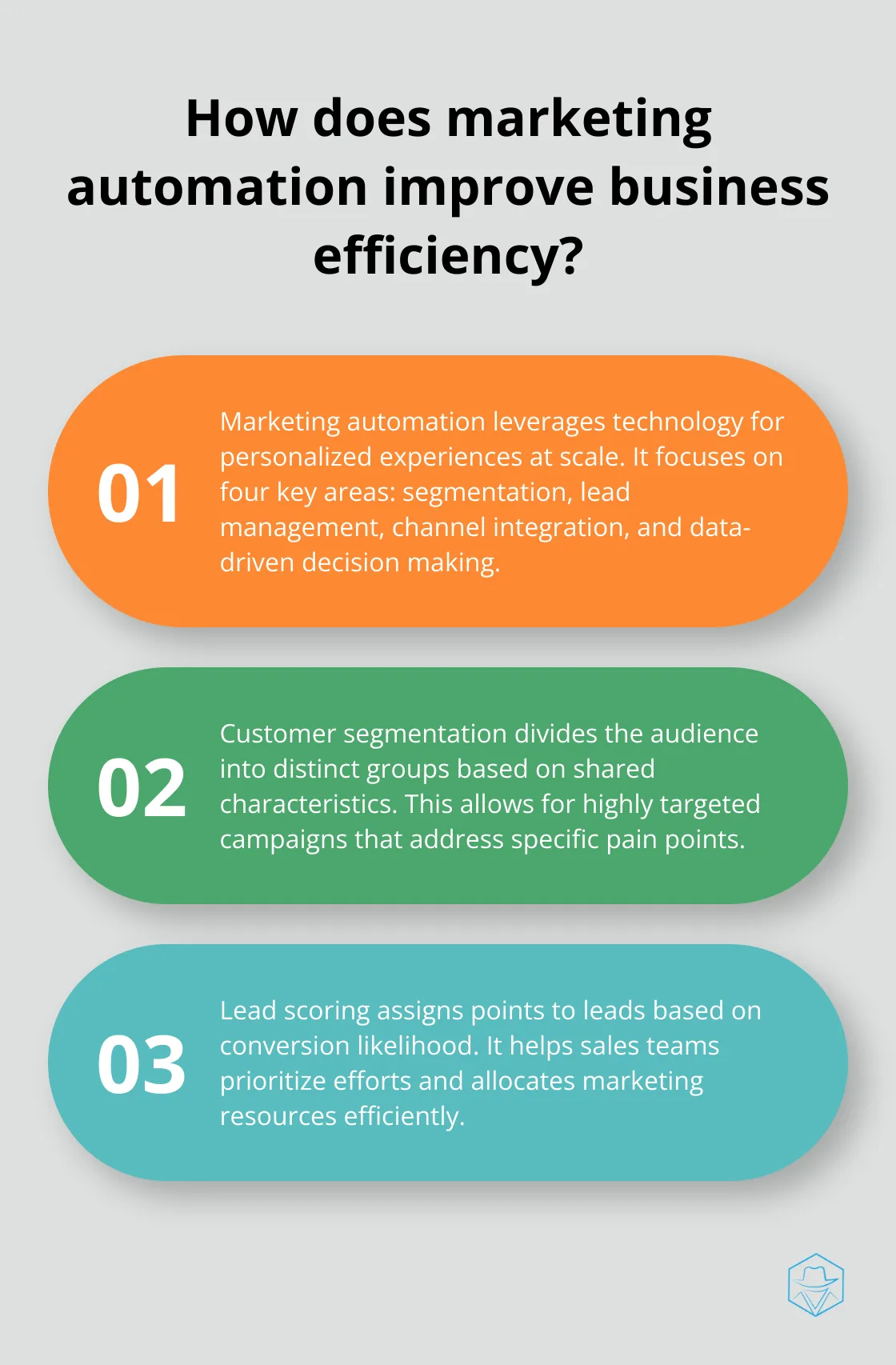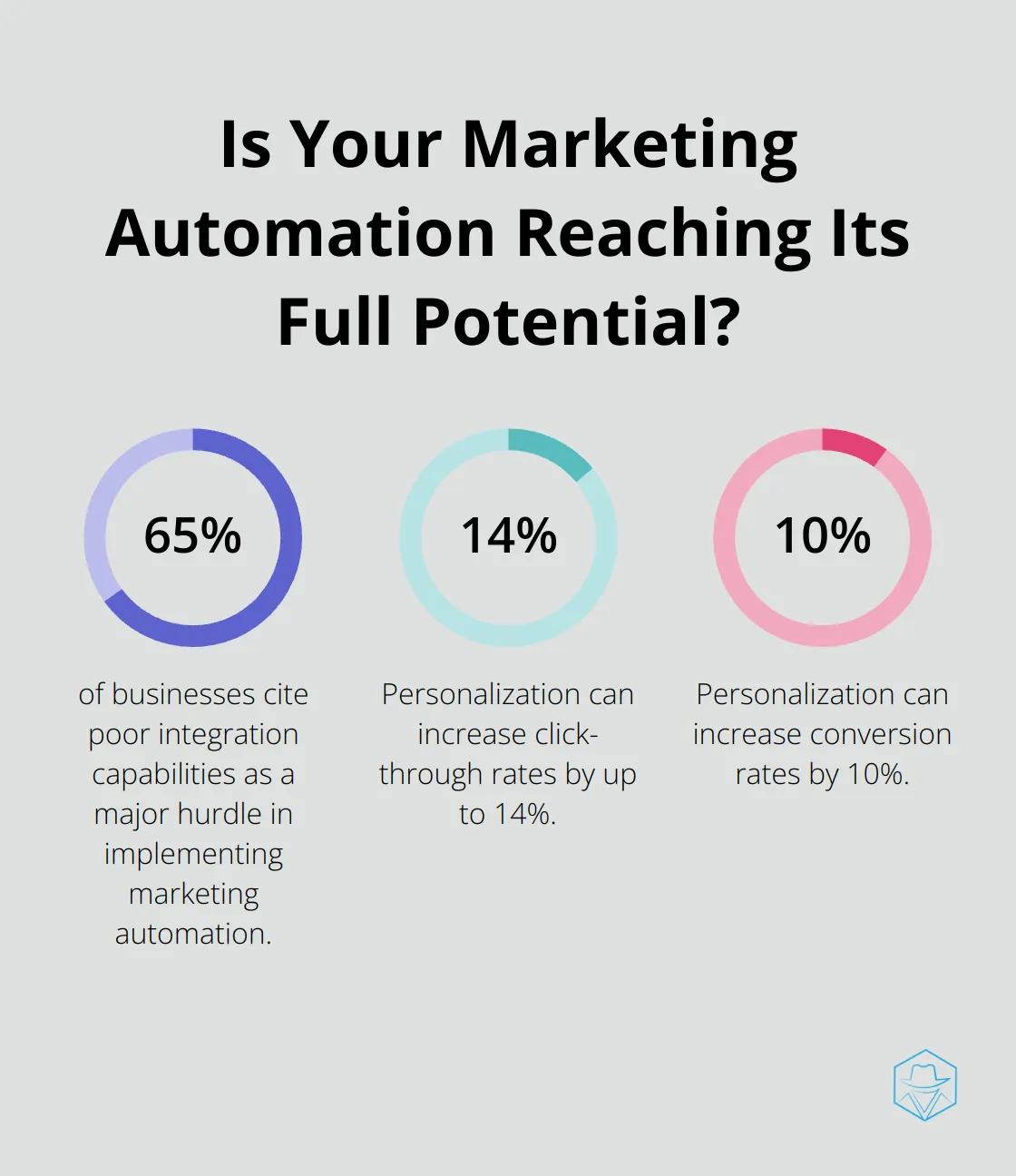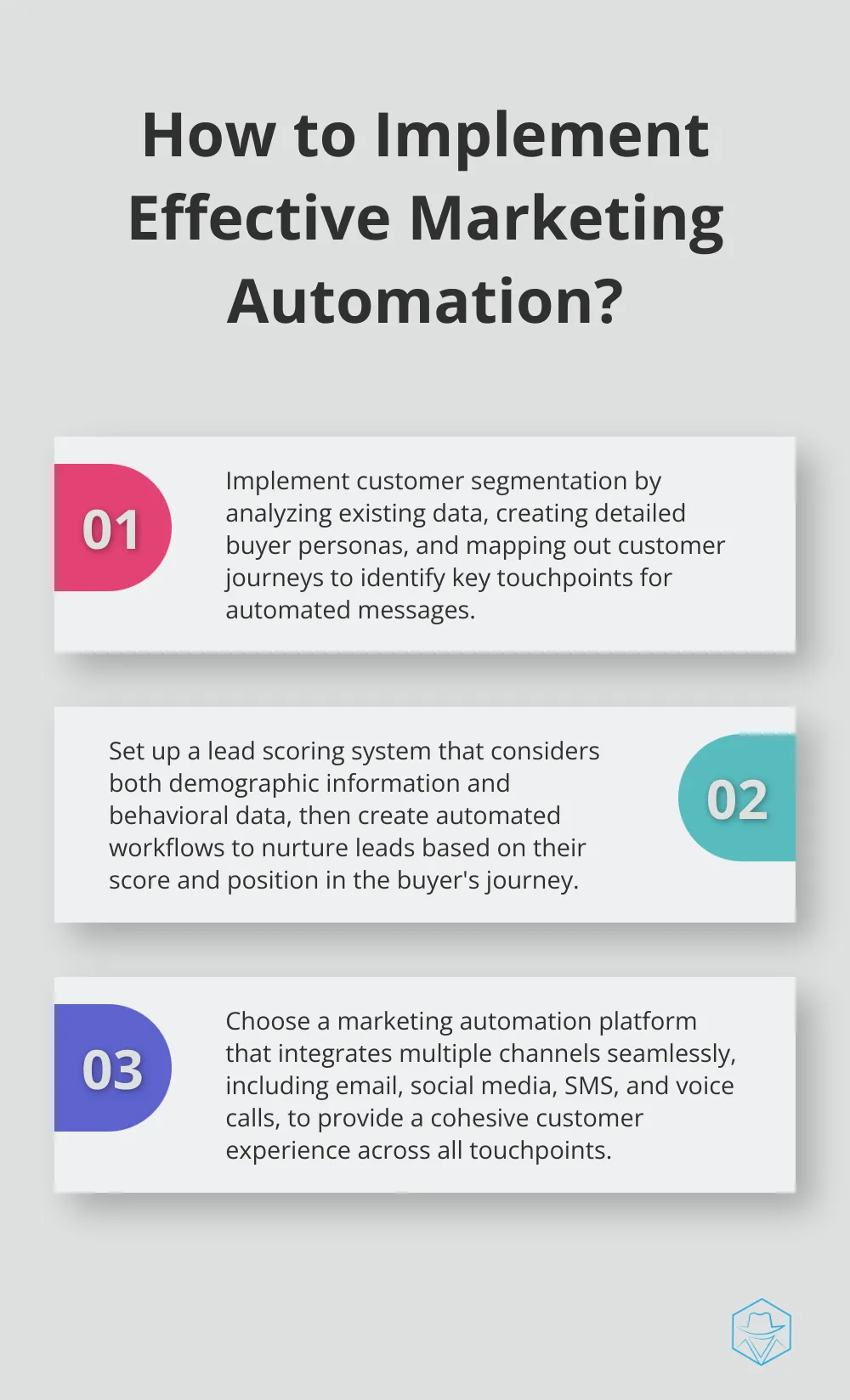Crafting a Winning Marketing Automation Strategy

Marketing automation has revolutionized how businesses connect with their audience. At Drop Cowboy, we’ve seen firsthand how a well-crafted marketing automation strategy can transform customer engagement and drive growth.
In this post, we’ll explore the key elements of a successful marketing automation strategy and provide practical tips for implementation. Whether you’re new to automation or looking to optimize your existing processes, you’ll find valuable insights to elevate your marketing efforts.
What Is Marketing Automation?
The Essence of Marketing Automation
Marketing automation transforms how businesses connect with their audience. It uses software to automate repetitive marketing tasks, which frees up time for strategic thinking and creativity. The core components include email campaigns, social media posting, ad campaigns, and lead nurturing workflows.
Automation Benefits Across Business Sizes
Both small startups and large corporations reap the rewards of marketing automation. It levels the playing field, allowing smaller teams to compete with larger ones. For example, a local bakery can use automation to send birthday discount codes to customers, matching the personalized touch of larger chains.

Marketing automation doesn’t just save time; it improves results. Businesses that use automation see a 14.5% increase in sales productivity and a 12.2% reduction in marketing overhead (Nucleus Research). These numbers highlight the tangible impact of automation on the bottom line.
Compelling Statistics
Hard data supports the effectiveness of marketing automation. HubSpot reports that 76% of companies using marketing automation see a return on investment within the first year. This quick turnaround makes automation an attractive option for businesses that want to boost their marketing efforts rapidly.
Personalization at Scale
One of the most powerful aspects of marketing automation is its ability to deliver personalized experiences to a large audience. Epsilon research indicates that 80% of consumers are more likely to make a purchase when brands offer personalized experiences. Automation allows you to tailor messages based on user behavior, preferences, and past interactions, making each customer feel valued.
Efficiency and Consistency
Marketing automation ensures consistency in messaging across all channels. It eliminates human error in repetitive tasks and ensures that campaigns run smoothly, even outside of business hours. This 24/7 capability is essential in today’s global market where customers expect instant responses.
The next chapter will explore the essential elements that make up a successful marketing automation strategy, helping you to harness these benefits for your own business.
How to Build a Powerful Marketing Automation Strategy
Set Clear, Measurable Objectives
The foundation of any effective marketing automation strategy rests on well-defined goals. These objectives should align with your overall business targets and remain specific and measurable. Instead of a vague goal like “increase leads,” try “boost qualified leads by 25% in the next quarter.” This precision allows you to track progress and adjust your strategy as needed.

A study by Ascend2 reveals that 43% of marketers prioritize the optimization of their overall strategy as their primary goal for improving marketing automation. This statistic underscores the importance of establishing a clear direction from the outset.
Master Audience Segmentation
Effective segmentation acts as the secret sauce of successful marketing automation. Divide your audience into distinct groups based on behavior, demographics, or preferences to deliver highly targeted messages that resonate.
A practical approach involves starting with 3-5 core segments and expanding as you gather more data. For example, you might segment based on:
- Purchase history
- Engagement level with your content
- Stage in the customer journey
HubSpot reports that marketers who use segmented campaigns note up to a 760% increase in revenue (an astounding figure that highlights the power of well-executed segmentation).
Craft Personalized Content That Converts
After segmenting your audience, create content that speaks directly to each group. Personalization extends beyond using a customer’s name in an email. It involves delivering relevant content at the right time in the customer journey.
For instance, if a segment of your audience has shown interest in a particular product category, your automation could trigger a series of emails showcasing related items, customer reviews, and even a limited-time offer.
Epsilon research indicates that 80% of consumers are more likely to make a purchase when brands offer personalized experiences (a statistic that emphasizes the critical role of tailored content in driving conversions).
Implement Smart Lead Scoring and Nurturing
Not all leads hold equal value, and your marketing automation strategy should reflect this reality. Implement a lead scoring system that assigns points based on actions taken, such as website visits, email opens, or content downloads. This approach allows you to focus your efforts on the most promising leads.
For lead nurturing, create a series of automated touchpoints that guide prospects through the sales funnel. This might include educational content for top-of-funnel leads and more product-focused information for those closer to making a purchase decision.
Marketo’s research shows that companies excelling at lead nurturing generate 50% more sales-ready leads at 33% lower cost (demonstrating the significant impact of a well-structured lead nurturing program).
As we move forward, we’ll explore the tools and techniques that can help you implement these strategies effectively, including popular platforms and innovative technologies that are shaping the future of marketing automation.
Choosing the Right Marketing Automation Tools
Popular Platforms for Every Need
The marketing automation landscape offers a variety of powerful platforms. HubSpot stands out for its user-friendly interface and comprehensive functionality. Marketo excels in B2B marketing with advanced lead management capabilities. Salesforce Marketing Cloud impresses with its robust integration features.

For businesses that prioritize voice and SMS marketing, Drop Cowboy emerges as the top choice. Its Mimic AI™ technology enables voice cloning, creating personalized messages that connect with customers on a deeper level.
Seamless CRM Integration
The integration of marketing automation with CRM systems multiplies its effectiveness. This connection creates a closed loop between marketing and sales, which prevents leads from slipping through the cracks. Companies with aligned sales and marketing teams close deals 67% more effectively (according to Salesforce).
When selecting a platform, prioritize those that offer native CRM integration or strong API connections. This seamless data flow enables more precise lead scoring and tailored nurturing campaigns.
AI and Machine Learning: The Game Changers
Artificial Intelligence (AI) and Machine Learning (ML) transform marketing automation. These technologies analyze vast data sets to predict customer behavior, optimize send times, and personalize content at scale.
AI-powered tools automatically segment audiences based on behavior patterns, which results in hyper-targeted campaigns. ML algorithms predict which leads have the highest likelihood of conversion, allowing marketers to focus their efforts strategically.
Optimizing Message Delivery
Timing plays a critical role in the success of marketing campaigns. Advanced automation tools (like Drop Cowboy’s Smart Delivery™ system) use AI to determine optimal message delivery times across different time zones. This optimization maximizes engagement rates and improves overall campaign performance.
Evaluating Platform Features
When choosing a marketing automation platform, consider these key features:
- Email marketing capabilities
- Lead scoring and nurturing tools
- Analytics and reporting functions
- Multi-channel campaign management
- Integration options with existing systems
The right combination of these features will empower your marketing team to create more effective, data-driven campaigns that resonate with your target audience.
Final Thoughts
Marketing automation has transformed how businesses connect with their audience. Companies that implement a robust marketing automation strategy save time, increase efficiency, and deliver personalized experiences at scale. The statistics prove its effectiveness: businesses using automation see significant improvements in sales productivity, marketing ROI, and customer satisfaction.

To start with marketing automation, assess your current marketing processes and identify areas for improvement. Choose a platform that aligns with your business needs and integrates with your existing systems. Drop Cowboy offers powerful features such as voice cloning and SMS integration, which can enhance your marketing efforts.
The future of marketing automation lies in AI and machine learning. These technologies will enable more sophisticated personalization, predictive analytics, and automated decision-making. Businesses that adapt to these trends and refine their marketing automation strategies will thrive in the competitive landscape.
blog-dropcowboy-com
Related posts

March 8, 2025
Marketing Strategy: Text and Cases Explained
Explore effective marketing strategy text and cases. Discover practical tools and insights for successful campaigns with real-world examples.

April 8, 2025
How to Implement Twilio Branded Calling
Learn to implement Twilio Branded Calling easily and enhance your business communication with a professional touch.

April 14, 2025
Shopify Email Contact: Best Practices for Customer Support
Boost customer support with Shopify email contact best practices for happier, loyal clients while enhancing communication and response efficiency.

March 8, 2025
Integrating Ringless Voicemail API into Your System
Boost communication with our ringless voicemail API integration guide. Get practical tips and tools for seamless implementation and improved efficiency.

April 9, 2025
Landing Your Dream Marketing Automation Job
Land your dream marketing automation job with tips on skills, networking, and resume optimization to boost your career in the digital marketing field.

April 17, 2025
Which SEO Apps Work Best for Shopify Stores?
Discover the best SEO apps for Shopify stores and boost your store’s visibility with top tools and strategies. Optimize your online presence now.